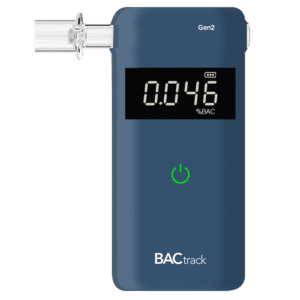Blood Alcohol Analysis: What It Is & the Factors Affecting BAC Levels
28 March, 2024

Consuming alcoholic drinks is a societal activity. However, excessive drinking habits can be dangerous. Thus, health professionals or authorities may require people to undergo alcohol testing. One of the most accurate methods is the blood alcohol analysis. It measures the amounts of alcohol in the bloodstream, providing an accurate assessment of the level of intoxication. However, several factors affect the Blood Alcohol Content (BAC) levels. These include the rate of elimination and absorption.
Some of the consequences of heavy drinking are alcohol use disorders, loss of consciousness, and alcohol poisoning. Moreover, chronic alcohol consumption can lead to legal implications. For instance, driving under the influence with a blood alcohol level of 0.05% can result in fines, license suspension, or jail time. Thus, accurate blood alcohol testing is crucial. The following sections will present blood tests, including how to conduct one and the factors that affect BAC levels.
What is a Blood Alcohol Analysis?
A blood alcohol analysis is a laboratory test. It measures the concentration of alcohol in the blood. This analysis is commonly used to determine the level of intoxication or impairment of individuals. Typically, law enforcement officials utilise it in cases of suspected drink driving or other alcohol-related offences. Additionally, providers administer screening in a medical facility to diagnose alcohol-related health conditions. It can also monitor the progress of treatment for alcoholism.
Unlike urine, saliva, and hair testing, people cannot conduct blood alcohol tests at home. The reason is that it requires specialised equipment and a trained professional to draw blood safely and accurately. Moreover, researchers consider blood analysis one of the most precise methods to know blood alcohol concentration.
Ethyl alcohol, the primary component of alcoholic beverages, quickly enters the bloodstream after consumption. It reaches peak levels within 30-90 minutes. As a result, determining the concentration of alcohol in the blood provides a more accurate representation of how much alcohol is affecting the human body at that moment.
Effects of Alcohol
- Alcohol affects the brain and impairs decision-making abilities. Hence, this leads to poor judgment and risky behaviour.
- The substance slows down the central nervous system. Consequently, people have difficulty articulating words and speaking clearly.
- Alcohol impacts motor skills and coordination. Then, this leads to unsteady movements and instability.
- Individuals act impulsively and engage in behaviour they might not normally engage in when sober because alcohol lowers inhibitions.
- Alcohol interferes with the formation of new memories, leading to gaps in memory and difficulties in recalling events.
- Heavy drinking can result in liver damage. People may get conditions like fatty liver disease, alcoholic hepatitis, and cirrhosis.

How to Conduct Blood Alcohol Analysis?
Only certified professionals can conduct blood alcohol analysis. They follow a few steps to administer it. First, they must collect a blood sample from the individual in question. The technician can do this by inserting a needle into a vein and drawing sufficient specimens. Afterwards, they must carefully label and store the sample in a sterile container to avoid contamination.
Healthcare providers utilise various methods of blood tests. These include Gas Chromatography and Mass Spectrometry (GC-MS), enzymatic analysis, and immunoassays. Each method has its set of advantages and limitations. Nevertheless, all are used to measure blood alcohol concentration accurately. Typically, they will express the results as a percentage or in grams of alcohol per deciliter of blood.
It is essential to understand the legal limits and guidelines for blood alcohol concentration in specific jurisdictions. Medical practitioners must record and report the outcomes precisely. Doing so ensures that proper legal actions can be taken if necessary. Additionally, the results of these tests can provide crucial information for medical treatment and intervention in cases of alcohol intoxication or overdose.
Accuracy and Reliability
Blood analysis is a highly accurate method to confirm if a person is under the influence of alcohol. Moreover, it helps determine the blood alcohol levels of the testee. This analysis relies on advanced technology, scientific principles, and rigorous quality control measures. Thus, it is valuable in legal proceedings, such as DUI cases.
The blood count test has also been extensively validated to ensure its reliability. Additionally, trained professionals perform blood analysis in controlled laboratory settings. Thus, it minimises the potential for human error. This makes blood testing highly dependable to maintain fairness and justice for legal purposes.

Factors that Affect Blood Alcohol Analysis
One of the ways to determine alcohol consumption is through blood alcohol analysis. However, several factors can influence the results of these tests. A significant factor is the rate of alcohol absorption within the body. When people drink alcohol, it is rapidly absorbed into the bloodstream through the walls of the stomach and the small intestine. Metabolism, the type of food, and the presence of other substances can affect the speed of absorption.
Another factor is the rate of alcohol elimination from the body. After alcohol is absorbed into the bloodstream, the liver works to metabolise and eliminate it. However, the rate of elimination varies among individuals due to factors such as age, liver health, gender, and overall body weight. Generally, the liver can metabolise approximately one standard drink per hour. If they consume alcohol at a faster rate than their liver can eliminate it, their BAC rises.
In addition, the quality and handling of the samples can impact the blood tests. Contamination or improper preservation of the blood specimen can lead to false positives or inaccurate results. Thus, health professionals must follow correct collection and storage techniques.
Understanding BAC and the Legal BAC Limits
Understanding BAC is crucial when it comes to responsible alcohol consumption and driving. BAC is a measure of the amount of alcohol present in the bloodstream. It is typically expressed as a percentage, representing the ratio of a standard drink to the total blood volume.
Moreover, individuals must understand the legal BAC limit. It varies from country to country. However, it is 0.05% in Australia. If the BAC reaches or exceeds this limit, the person is considered legally intoxicated. Then, they may face penalties. Also, they must know that even low BAC levels can impair judgment, coordination, and reaction time, making driving unsafe.
Conclusion
Blood alcohol analysis is a crucial procedure for determining the level of alcohol in the bloodstream. The test is crucial in assessing the impairment of individuals and potential danger on the roads. Professionals conduct the blood analysis by performing a blood draw. They use various laboratory techniques to measure the alcohol concentration. Medical providers follow strict protocols to ensure accurate results. The reason is that a small error could have significant consequences.
Several factors can affect the results of blood analysis. These include the rate of alcohol absorption and elimination. Also, the handling and storage of the blood sample can impact the accuracy of the results. Therefore, adhering to guidelines and procedures is essential to minimise potential errors. Additionally, professionals must consider these factors and exercise caution when interpreting blood analysis results. Overall, blood analysis plays a pivotal role in safeguarding public safety.





























